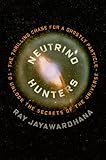We all know how gravity is supposed to work. Without air resistance, a feather and a bowling ball (the standardized materials for all gravitational tests) should accelerate toward the center of the Earth at the same rate, thus striking the ground at the same time. Humans have tested this. It works.
Although we know this thing, it is so far removed from our daily experience that it is still stunning to watch it happen. This fundamental principle is nicely illustrated in this video from the BBC. The video also nicely shows how amazed a roomful of individuals who know how the experiment will work can be when the experiment works exactly as expected.
That is why we need the scientific method to rigorously test hypotheses and incrementally build our knowledge of how the universe works. Our day-to-day experience of and intuition about the world is extremely valuable, but also extremely deceptive.
For the record, the tortoise vs hare in a vacuum race I alluded to in the title would be incredibly inhumane and disappointing, in addition to having no winner – unless, UNLESS we had the tortoise and hare race in spacesuits. Why aren’t we racing animals in spacesuits?
HT: Jared Heidinger






